Drum Mic Techniques: From Single to Several Mics
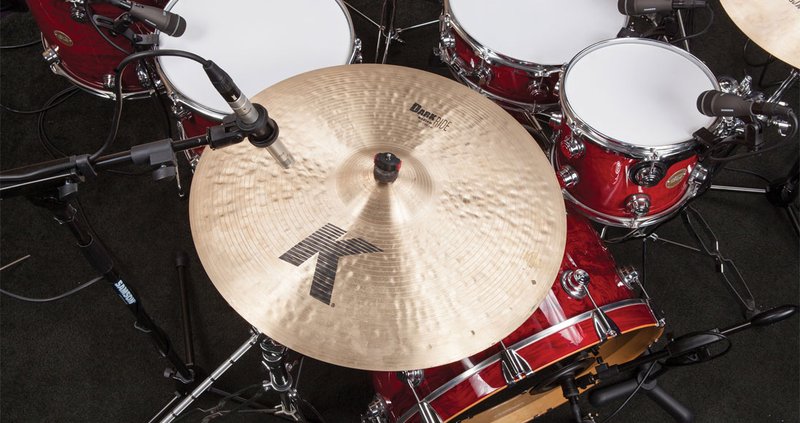
The process of recording drums has significantly evolved over the years. One of the amazing things about the development of new techniques is that they live comfortably alongside the classics. Yes, there are complex routing, compressing, busing, and miking options for your favorite drummer to utilize – but these all work together with knowing the basic setups and when to use them. Let’s take a look at a few ways to approach miking drums from a single mic to a stable of options.
Single Microphone
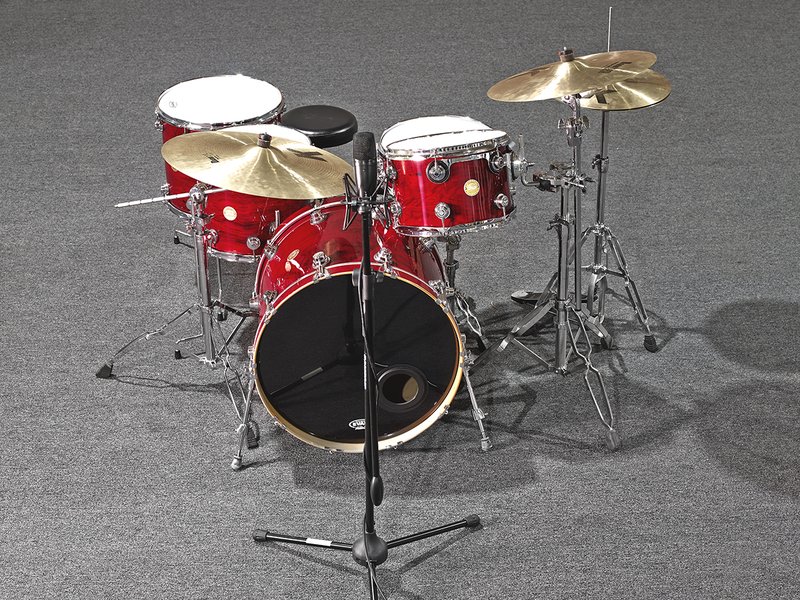
If I’ve only got one mic to dedicate to the drum kit, it’s likely going to be a condenser mic. This has happened more than once, I’ve had to produce live shows where the mixer only had 8 channels for the entire band – so having a single mic technique already that’s tried and tested is quite important. When using a single condenser mic for the drum kit, it all depends on the polar or pickup pattern. If the mic only has a cardioid pattern available, I’ll place it around 5 feet away from the kit about even with the cymbals, but angled down to capture some more of the tone from the kick and tom.
If the mic can work in a figure 8 polar pattern, you can place it in the kit area just above the kick drum. One side of the mic will pick up a nice powerful kick sound, and the other will pick up the cymbals above it. You’ll want a strong stand, and you’ll also probably have to adjust the mic a bit to really hone in on your balance. An omnidirectional condenser can go in the same spot, but perhaps a bit more equidistant from every element of the kit.
The Samson CL8a is a great choice for this as it has selectable polar patterns. You can try out all of the different configurations with one mic! Just be prepared to give a little boost to the low end on your EQ, or roll off a bit of highs. Condenser mics tend to be a bit more friendly to the upper sonic range.
Two Microphones
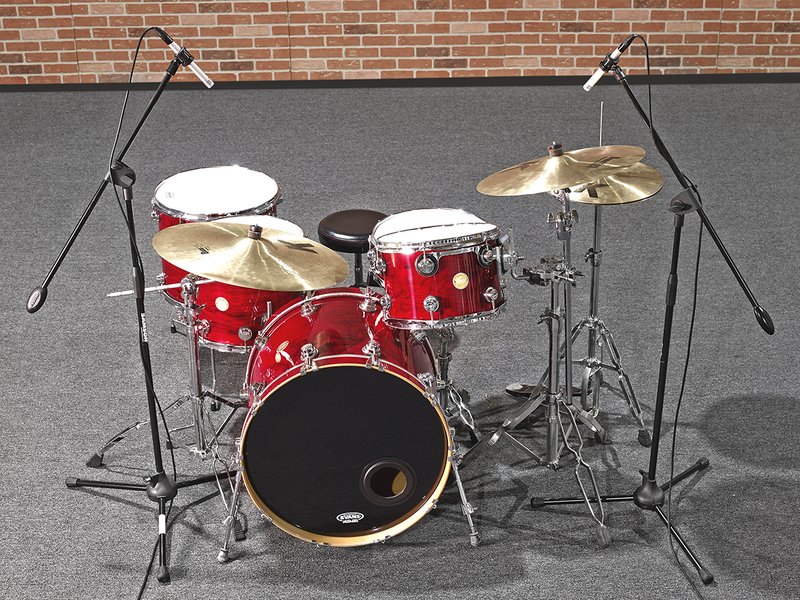
With two microphones, most folks gravitate to a stereo setup pretty quickly. I don’t always follow that. You can also use 2 mics in a close/distant mic setup if the room you’re recording in has a decent sound. If it doesn’t, you’ll want to keep the mics pretty tight to the drum kit. The stereo field can be worth giving up for the close/distant mic setup if you want to use one of the mics to really hone in and favor a specific area of the kit that you feel the other mic is weak on.
For live mixes, I’ll sometimes use this method with one mic on the kick and another on the ‘snarea’ (snare area, angled to pick up some tom/hi hat as well). Using directional condensers can really help you hone in on a specific zone, so have a look at the Samson C02 mics for this setup.
Three (and kinda 4) Mics
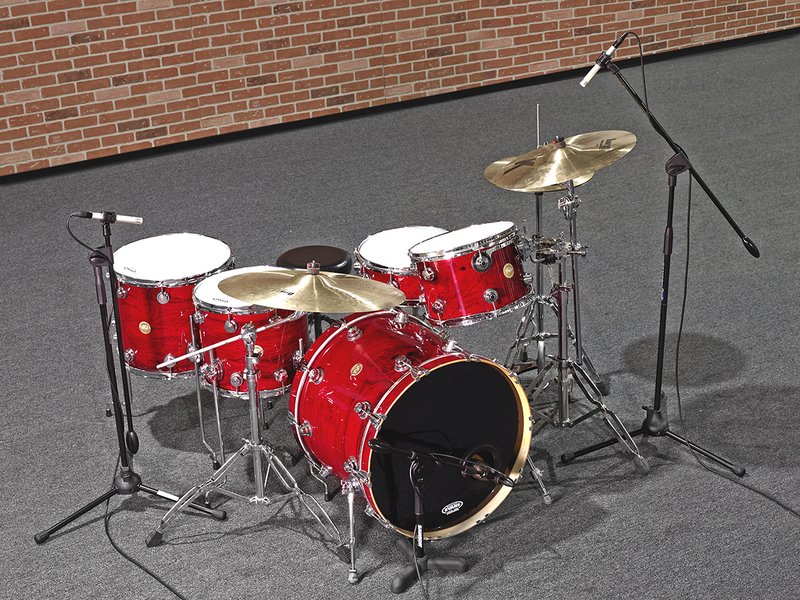
Once you get into ‘three mic territory’ the most common choice is likely the Bonham technique (or, more accurately, the Glyn Johns method). This setup was used for a really aggressive drum sound on Zeppelin recordings, but also on The Who, The Rolling Stones, and more. With three mics, you’ll set up one on your kick drum. The second mic would be pointed at the snare from about 4-5 feet up. Your third mic should be over by the floor tom BUT pointed towards the hi-hat all the way across the kit. Pay particular attention to the distance of the 2 overhead mics from the snare – you’ll want them to be the same distance to avoid phasing issues and to maximize the panning potential. You don’t have to go fully panned L/R with these mics, although many people do.
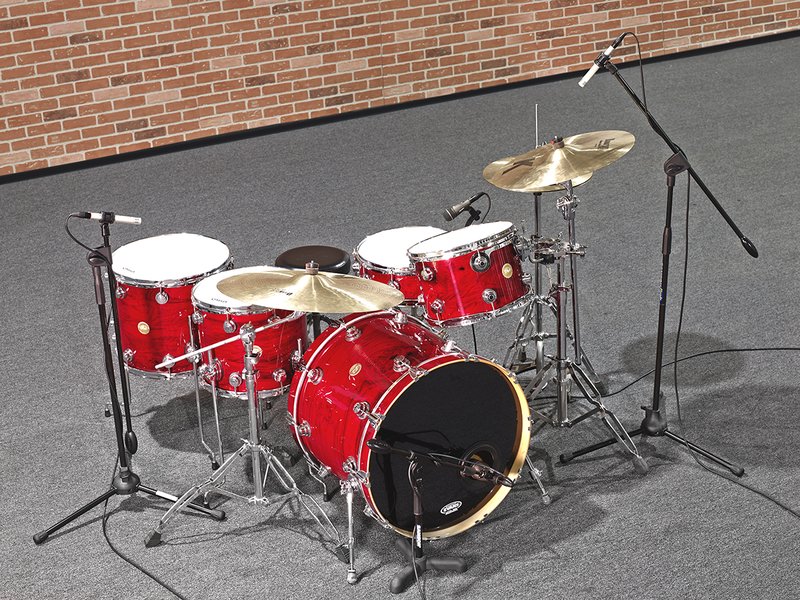
This technique eventually evolved to include a fourth mic, one dedicated to the snare. Some folks still utilize three, some go for the fourth. It really depends on the drummer and the material you’re recording (see below). All the microphones displayed in the examples shown above and below are available in the Samson DK707 drum mic kit.
Everything Gets a Mic
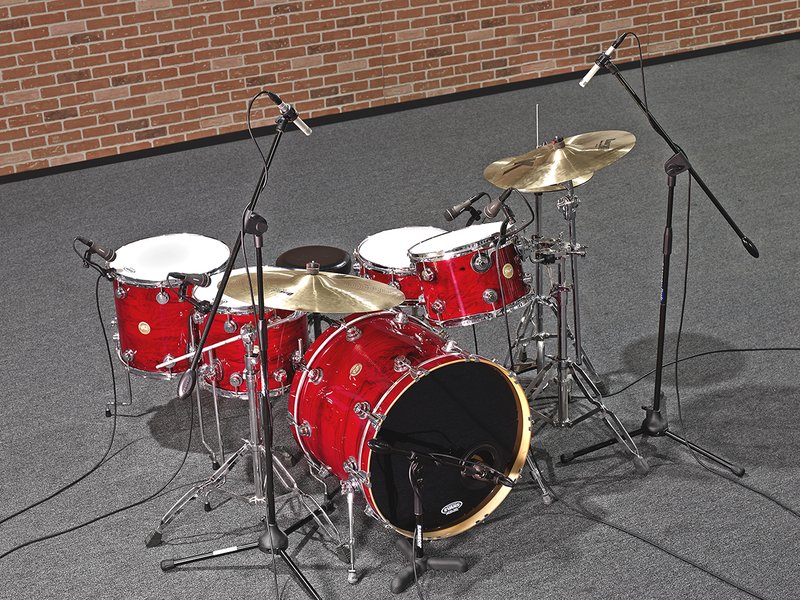
After three or four mics, if I’m looking to expand, I typically jump into the ‘everything gets a mic’ method. This is employed in most home studios as with close miking you can control the room tone and correct for an improperly treated acoustic space. Putting a spot mic on every drum, then two overheads to capture the cymbals is the method that most folks fall into these days. The Samson DK707 is a complete kit that includes all the microphones you need to start close-miking your drum kit.
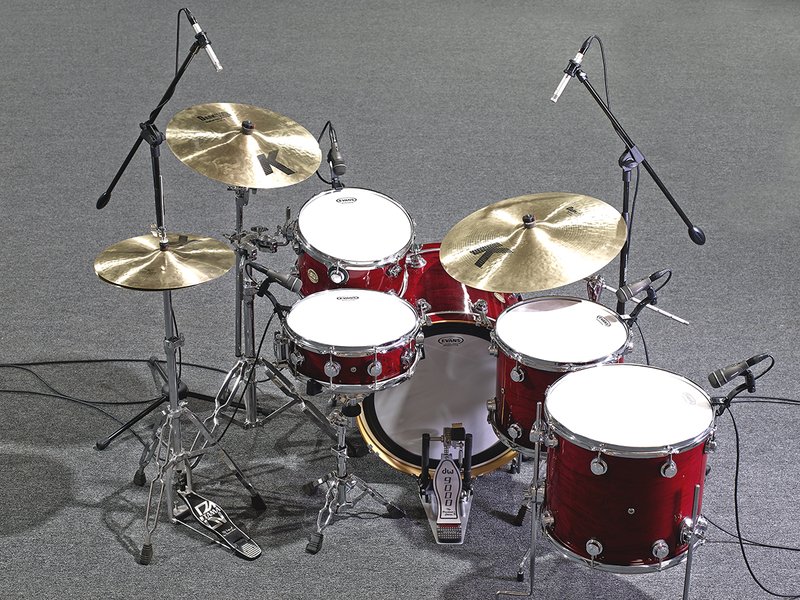
Colors and Flavors
Each of these techniques are still used today, and all are valid ways to track your timekeeper. Even if you have enough mics and channels to ‘always mic every drum’, you should familiarize yourself with the more minimal techniques. They offer a specific sound that you may need to ‘call up’ in a pinch, or you simply may run out of channels when producing a live show!
